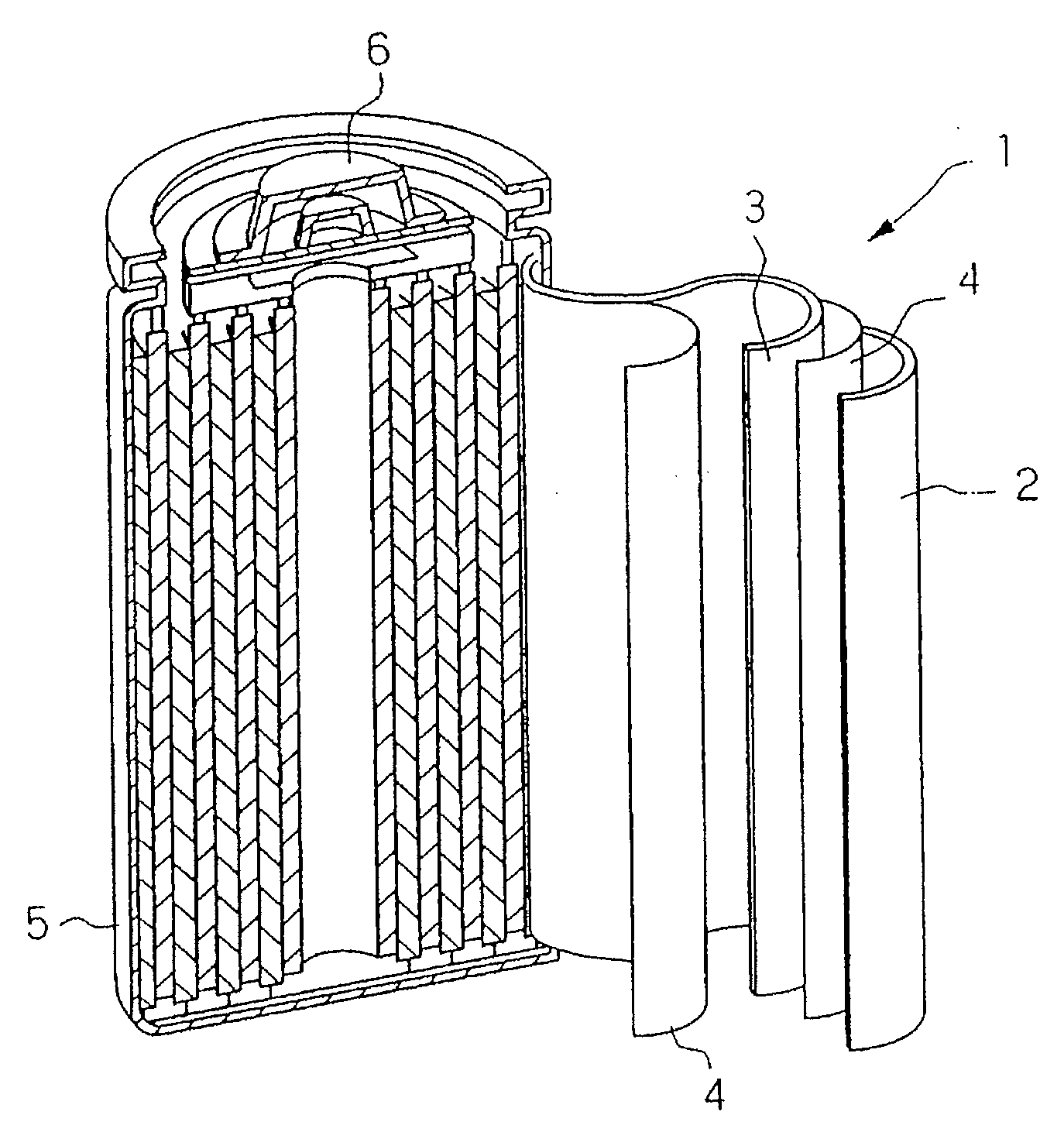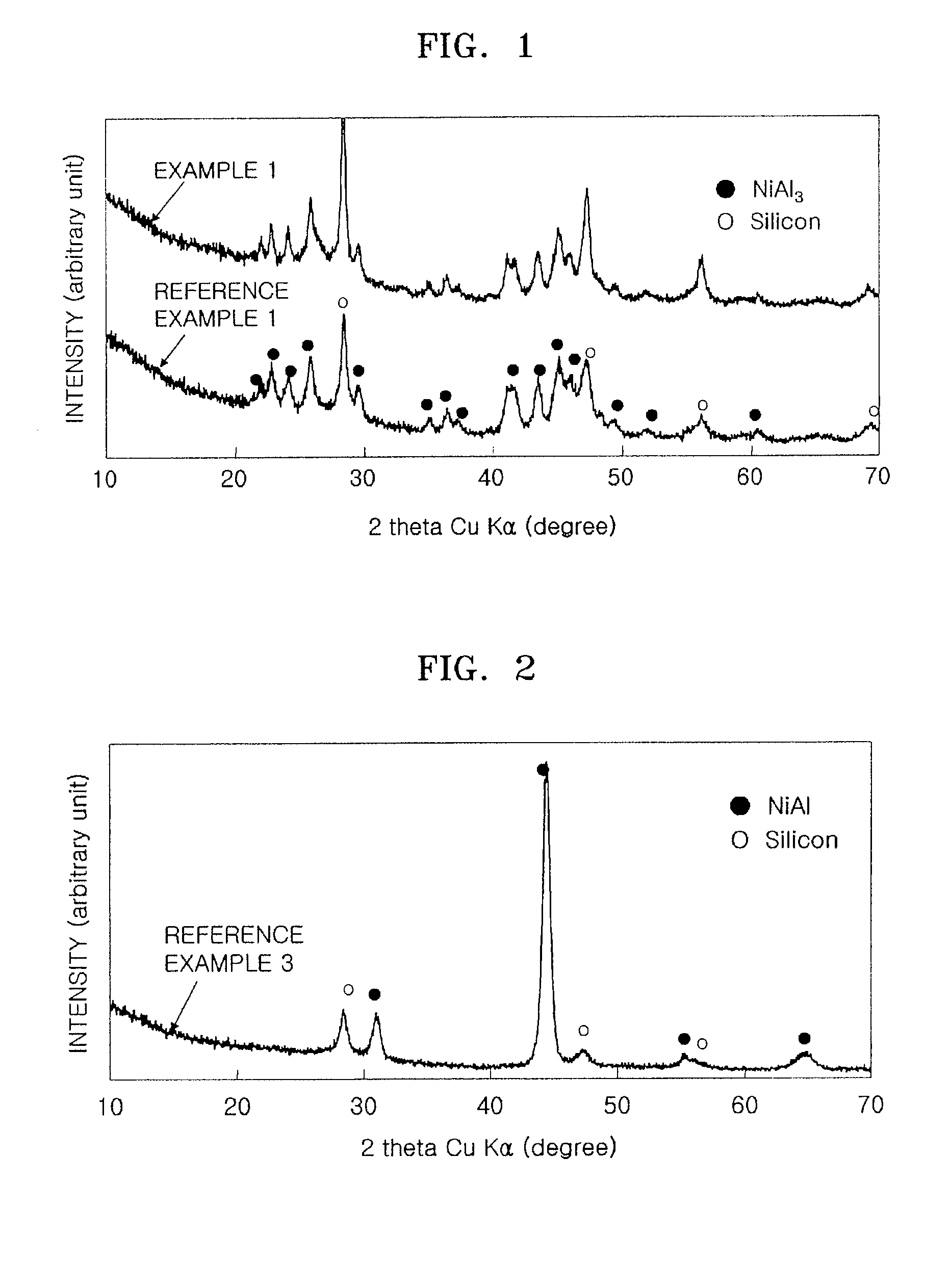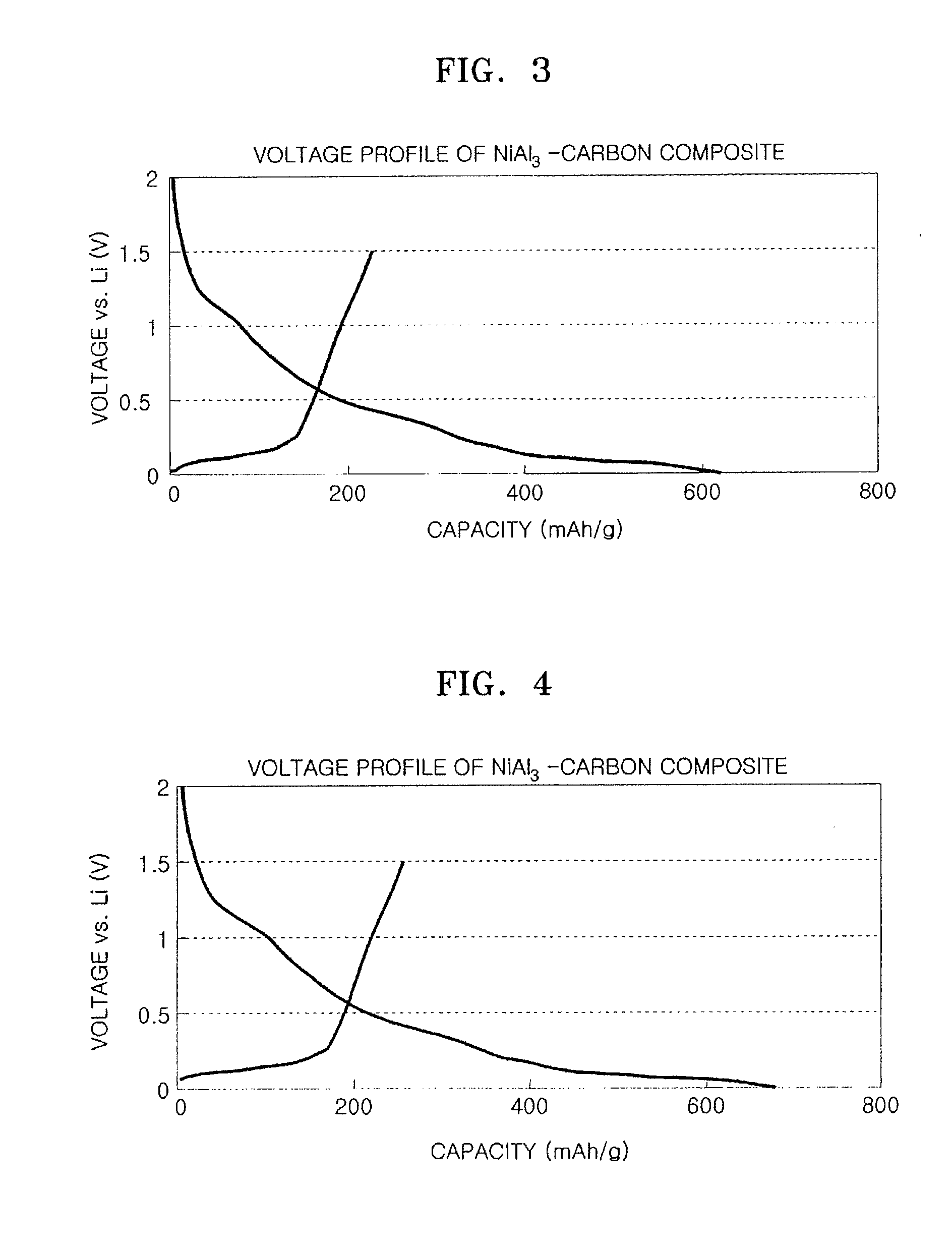Composite anode active material, method of preparing the same, and anode and lithium battery containing the material
- Summary
- Abstract
- Description
- Claims
- Application Information
AI Technical Summary
Benefits of technology
Problems solved by technology
Method used
Image
Examples
example 1
[0061]1.0 g of silicon powder having an average diameter of 50 μm (Noah Technology, USA), 1.8 g of NiAl3 powder (Cerac, USA), 0.2 g of artificial graphite powder, and 8 steel balls weighing 21 g were combined in a hardened steel container. The container was filled with argon and closed. The resultant mixture was then milled using a mixer (SPEX Certiprep, USA, Model No. 8000M Mixer / Mill) for 60 minutes to produce a Si / NiAl3 / graphite composite anode active material.
example 2
[0062]A composite anode active material was prepared in the same manner as in Example 1 except that 1.0 g of silicon powder having an average diameter of 50 μm (Noah Technology, USA), 1.6 g of NiAl3, and 0.4 g of artificial graphite were used.
example 3
[0063]A composite anode active material was prepared in the same manner as in Example 1 except that 1.0 g of silicon powder having an average diameter of 100 nm (Nanostructured and Amorphous Materials, USA), 1.6 g of NiAl3, and 0.4 g of artificial graphite were used.
PUM
 Login to View More
Login to View More Abstract
Description
Claims
Application Information
 Login to View More
Login to View More - R&D
- Intellectual Property
- Life Sciences
- Materials
- Tech Scout
- Unparalleled Data Quality
- Higher Quality Content
- 60% Fewer Hallucinations
Browse by: Latest US Patents, China's latest patents, Technical Efficacy Thesaurus, Application Domain, Technology Topic, Popular Technical Reports.
© 2025 PatSnap. All rights reserved.Legal|Privacy policy|Modern Slavery Act Transparency Statement|Sitemap|About US| Contact US: help@patsnap.com



